Related Research Articles
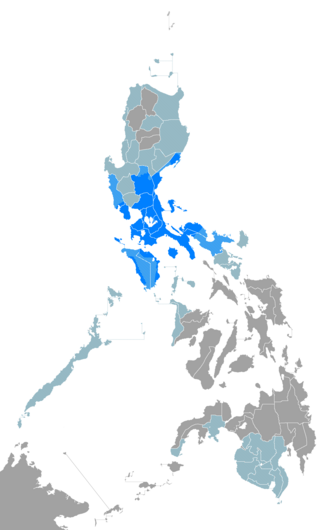
Tagalog is an Austronesian language spoken as a first language by the ethnic Tagalog people, who make up a quarter of the population of the Philippines, and as a second language by the majority. Its standardized form, officially named Filipino, is the national language of the Philippines, and is one of two official languages, alongside English.
A vowel is a syllabic speech sound pronounced without any stricture in the vocal tract. Vowels are one of the two principal classes of speech sounds, the other being the consonant. Vowels vary in quality, in loudness and also in quantity (length). They are usually voiced and are closely involved in prosodic variation such as tone, intonation and stress.

Ë, ë (e-diaeresis) is a letter in the Albanian, Kashubian, Emilian-Romagnol, Ladin, and Lenape alphabets. As a variant of the letter e, it also appears in Acehnese, Afrikaans, Breton, Dutch, English, Filipino, French, Luxembourgish, Piedmontese, Russian, the Abruzzese dialect of the Neapolitan language, and the Ascolano dialect. The letter is also used in Seneca, Taiwanese Hokkien, Turoyo, and Uyghur when written in Latin script.
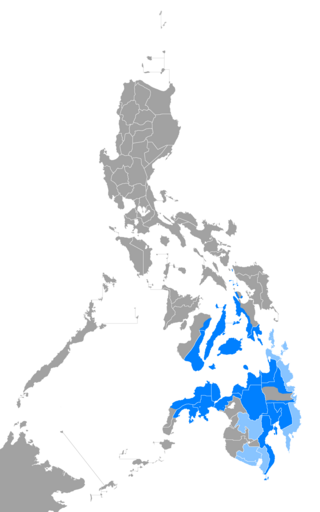
Cebuano is an Austronesian language spoken in the southern Philippines. It is natively called by its generic term Bisaya or Binisaya and sometimes referred to in English sources as Cebuan. It is spoken by the Visayan ethnolinguistic groups native to the islands of Cebu, Bohol, Siquijor, the eastern half of Negros, the western half of Leyte, and the northern coastal areas of Northern Mindanao and the Zamboanga Peninsula. In modern times, it has also spread to the Davao Region, Cotabato, Camiguin, parts of the Dinagat Islands, and the lowland regions of Caraga, often displacing native languages in those areas.
The phonology of Standard German is the standard pronunciation or accent of the German language. It deals with current phonology and phonetics as well as with historical developments thereof as well as the geographical variants and the influence of German dialects.

Pangasinan (Pangasinense) is an Austronesian language, and one of the eight major languages of the Philippines. It is the primary and predominant language of the entire province of Pangasinan and northern Tarlac, on the northern part of Luzon's central plains geographic region, most of whom belong to the Pangasinan ethnic group. Pangasinan is also spoken in southwestern La Union, as well as in the municipalities of Benguet, Nueva Vizcaya, Nueva Ecija, and Zambales that border Pangasinan. A few Aeta groups and most Sambal in Central Luzon's northern part also understand and even speak Pangasinan as well.
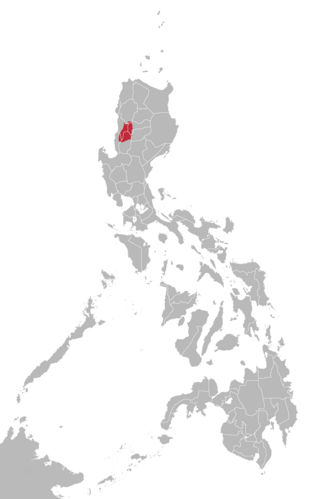
Kankanaey is a South-Central Cordilleran language under the Austronesian family spoken on the island of Luzon in the Philippines primarily by the Kankanaey people. Alternate names for the language include Central Kankanaey, Kankanai, and Kankanay. It is widely used by Cordillerans, alongside Ilocano, specifically people from Mountain Province and people from the northern part of the Benguet Province. Kankanaey has a slight mutual intelligibility with the Ilocano language.
The Tawbuid language is a language spoken by Tawbuid Mangyans in the province of Mindoro in the Philippines. It is divided into eastern and western dialects. The Bangon Mangyans also speak the western dialect of Tawbuid.
The Sambalic languages are a part of the Central Luzon language family spoken by the Sambals, an ethnolinguistic group on the western coastal areas of Central Luzon and the Zambales mountain ranges.
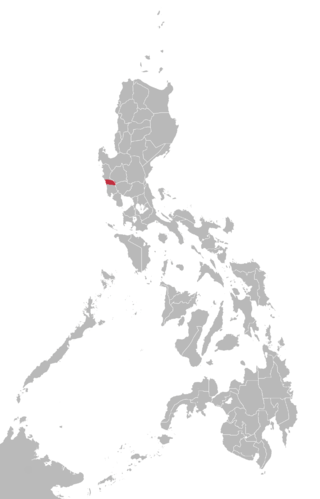
Botolan is a Sambalic language spoken by 32,867 Sambal, primarily in the Zambal municipalities of Botolan and Cabangan in the Philippines. Language status is 5 (developing).
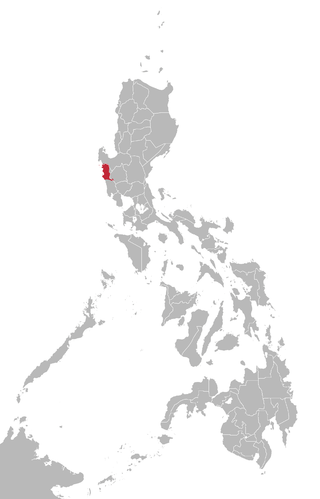
Sambal or Sambali is a Sambalic language spoken primarily in the Zambal municipalities of Santa Cruz, Candelaria, Masinloc, Palauig, and Iba, and in the Pangasinense municipality of Infanta in the Philippines; speakers can also be found in Panitian, Quezon, Palawan and Barangay Mandaragat or Buncag of Puerto Princesa. The speakers of the language are decreasing due to the fact that many of the speakers are shifting to Tagalog.
Abellen, Abenlen, Aburlin, or Ayta Abellen, is a Sambalic language. It has about 3,500 speakers and is spoken in a few Aeta communities in Tarlac province, Philippines. Ayta Abellen itself is part of the Sambalic language family in the Philippines and is closely related to not only the five other Ayta dialects but also the Botolan dialect of Sambal. Ethnologue reports 45 monolinguists.
Kensiu (Kensiw) is an Austro-asiatic language of the Jahaic subbranch. It is spoken by a small community of 300 in Yala Province in southern Thailand and also reportedly by a community of approximately 300 speakers in Western Malaysia in Perak and Kedah States. Speakers of this language are Negritos who are known as the Mani people or Maniq of Thailand.
Jebero is a moribund Amazonian language spoken by the Jebero people of Jeberos, Peru. It is spoken by only a small number of older adults and belongs to the Cahuapanan family together with Chayahuita.
Tboli, also Tau Bilil, Tau Bulul or Tagabilil, is an Austronesian language spoken in the southern Philippine island of Mindanao, mainly in the province of South Cotabato but also in the neighboring provinces of Sultan Kudarat and Sarangani. According to the Philippine Census from 2000, close to 100,000 Filipinos identified T'boli or Tagabili as their native language.
Agusan is a Manobo language of northeastern Mindanao in the Philippines.
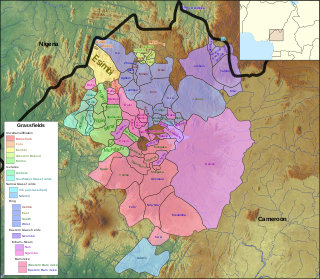
Babanki, or Kejom, is the traditional language of the Kejom people of the Western Highlands of Cameroon.
Aushi, known by native speakers as Ikyaushi, is a Bantu language primarily spoken in the Lwapula Province of Zambia and the (Haut-)Katanga Province of the Democratic Republic of Congo. Although many scholars argue that it is a dialect of the closely related Bemba, native speakers insist that it is a distinct language. Nonetheless, speakers of both linguistic varieties enjoy extensive mutual intelligibility, particularly in the Lwapula Province.
Chiltepec-Tlacoatzintepec Chinantec is a Chinantecan language of Mexico, spoken in northern Oaxaca in the towns of San José Chiltepec, San Juan Bautista Tlacoatzintepec, San Pedro Alianza, Santiago Quetzalapa, and San Juan Zapotitlán. The two principal varieties, Chinantec and Tlacoatzintepec, have marginal mutual intelligibility. They are close to Sochiapan Chinantec.

Ilocano is an Austronesian language spoken in the Philippines, primarily by Ilocano people and as a lingua franca by the Igorot people and also by the native settlers of Cagayan Valley. It is the third most-spoken native language in the country.
References
- ↑ Bolinao at Ethnologue (18th ed., 2015) (subscription required)
- ↑ Ethnologue (1990)
- ↑ https://www.ethnologue.com/language/smk (subscription required)
- ↑ "National Philippine Proverb in Various Philippine Languages". Carl Rubino's Homepage.
Persons, Gary. (1978). Bolinao: A Preliminary Phonemic Statement. Summer Institute of Linguistics.